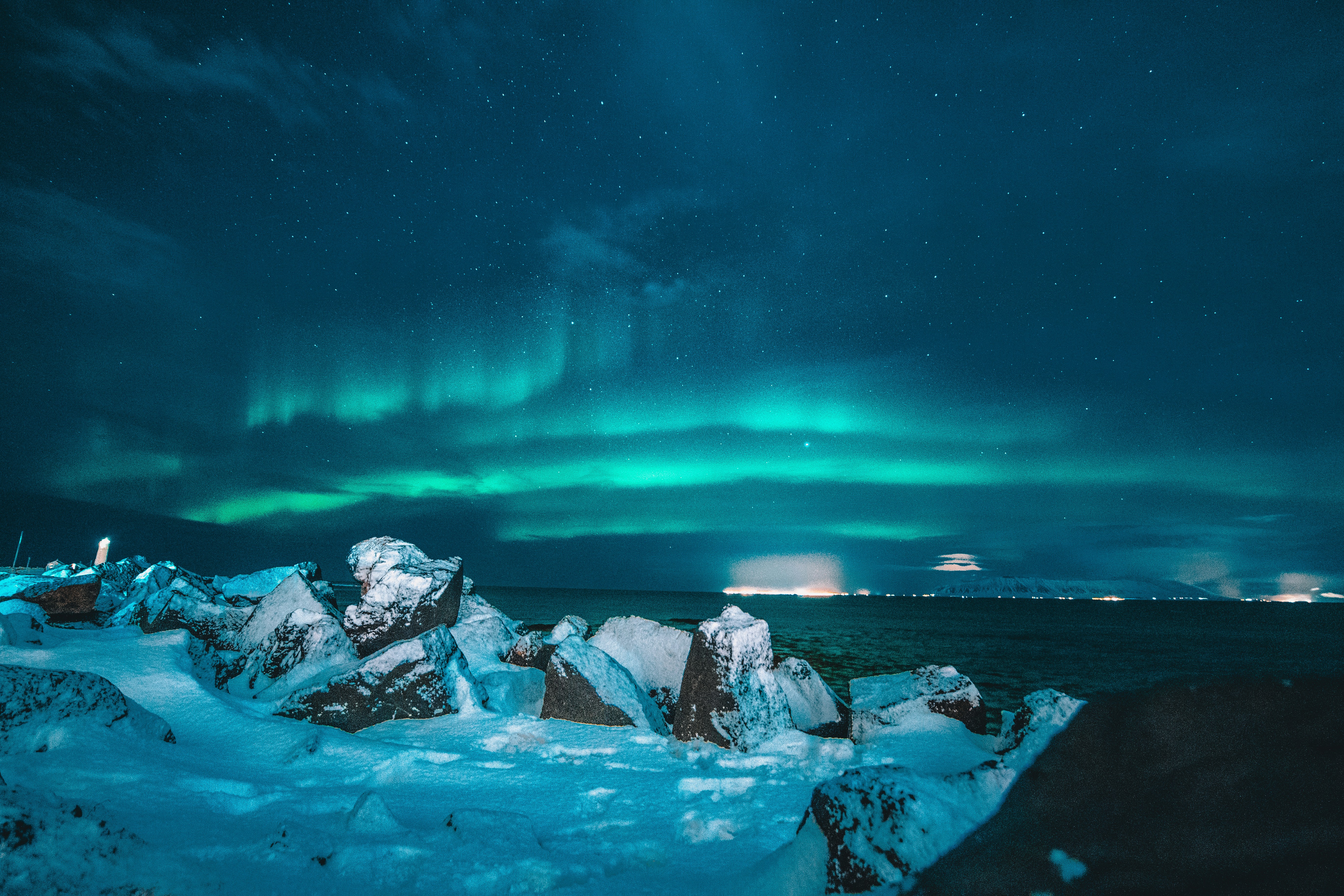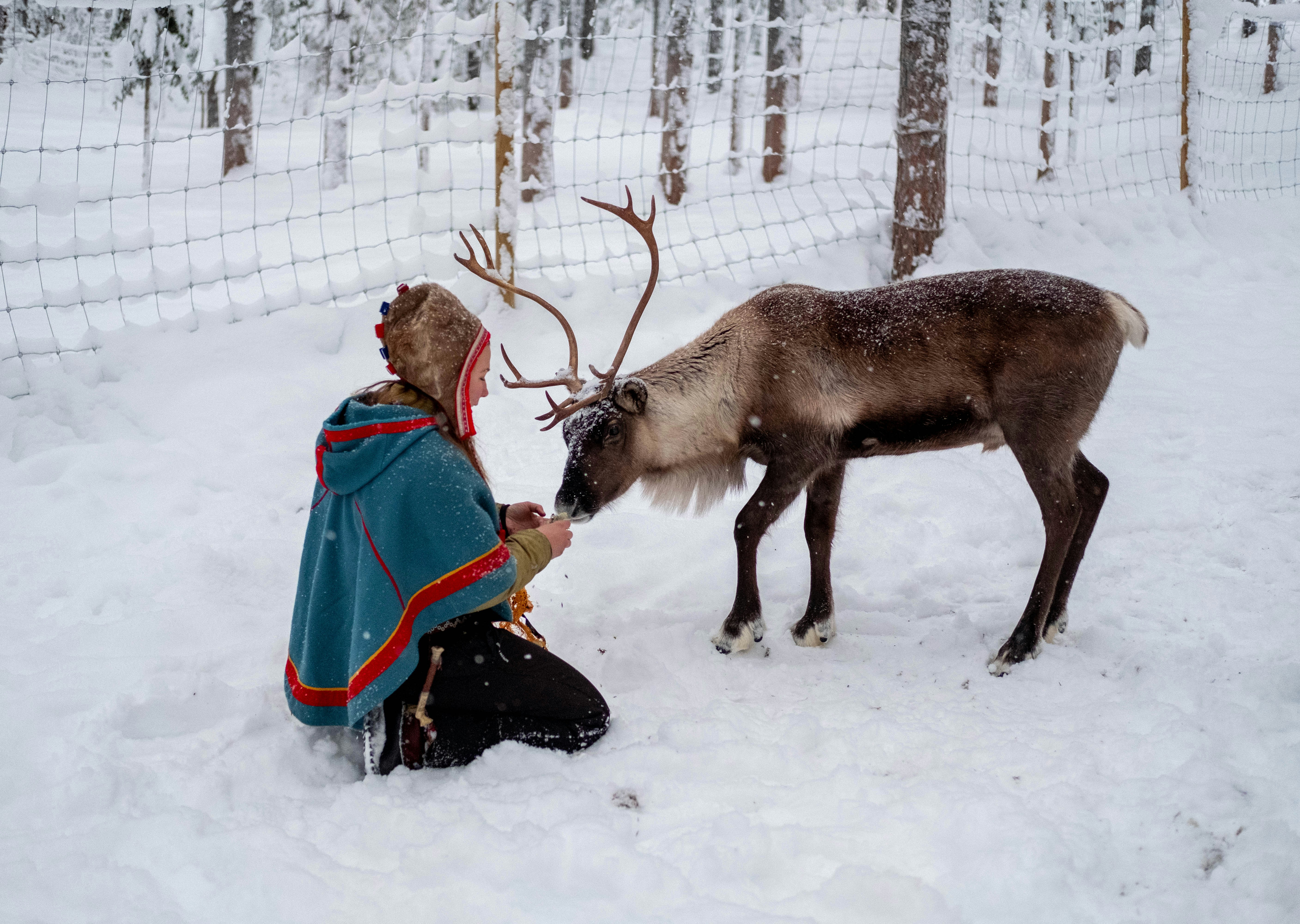Arctic Landscape Photography: Capturing Lyngen's Dramatic Beauty
Master Arctic landscape photography in Lyngen Peninsula. Complete guide to techniques, locations, and equipment for capturing stunning northern wilderness images.
Arctic Landscape Photography: Capturing Lyngen's Dramatic Beauty
The Lyngen Peninsula presents photographers with one of the world's most spectacular Arctic landscapes, where dramatic fjords meet towering alpine peaks under ever-changing northern skies. From the ethereal glow of polar light to the raw power of winter storms, this pristine wilderness offers endless opportunities for creating compelling landscape images that capture the essence of the Arctic.
Understanding Arctic Light
The Polar Light Cycle
Arctic photography in Lyngen revolves around the unique characteristics of northern light:
Polar Night (Mid-November to Late January):
- Civil Twilight: Soft, diffused light lasting several hours
- Blue Hour Extended: Long periods of deep blue atmospheric light
- Aurora Opportunities: Dark skies optimal for northern lights photography
- Artificial Light Balance: Combining natural and artificial illumination
Transitional Periods (October-November, February-March):
- Golden Hour Extended: Low sun angles creating warm, dramatic lighting
- Rapid Changes: Dynamic weather and light conditions
- Optimal Contrast: Balance between snow and exposed landscapes
- Varied Opportunities: Multiple lighting scenarios throughout day
Midnight Sun (May-July):
- 24-Hour Photography: Continuous shooting opportunities
- Consistent Quality: Stable lighting conditions for landscape work
- Color Temperature Variations: Warm tones throughout the day
- Creative Challenges: Working without traditional day/night cycles
Color Temperature and White Balance
Arctic Color Characteristics:
- Cool Dominance: Blue and cyan tones prevalent in snow and ice
- Warm Accents: Golden alpenglow and sunrise/sunset colors
- Neutral Grays: Overcast conditions creating monochromatic palettes
- Artificial Warming: Buildings and lights adding warm color points
White Balance Strategies:
- Daylight Setting: Good starting point for most Arctic conditions
- Manual Control: Fine-tune for specific atmospheric conditions
- RAW Advantage: Maximum flexibility in post-processing adjustments
- Color Checker: Reference tool for accurate color reproduction
Essential Camera Equipment
Camera Bodies and Lenses
Camera Requirements:
- Weather Sealing: Essential protection against snow and moisture
- Cold Weather Performance: Reliable operation to -25°C or lower
- Battery Life: Extended power management for long shooting sessions
- High ISO Performance: Clean images in low-light conditions
Lens Selection:
- Wide-Angle (14-24mm): Capture expansive mountain and fjord vistas
- Standard Zoom (24-70mm): Versatile focal lengths for varied compositions
- Telephoto (70-200mm): Isolate distant peaks and compress perspectives
- Ultra-Wide (10-14mm): Dramatic foreground and sky relationships
Arctic Photography Accessories
Essential Gear:
- Sturdy Tripod: Carbon fiber recommended for weight and stability
- Remote Release: Minimize vibration during long exposures
- Lens Filters: Polarizers and neutral density filters for creative control
- Extra Batteries: Cold weather significantly reduces battery life
- Memory Cards: High-capacity, fast cards for burst shooting
Cold Weather Protection:
- Camera Rain Cover: Protection from snow and precipitation
- Lens Warmers: Prevent condensation when moving between temperatures
- Desiccant Packets: Moisture control for equipment storage
- Insulated Camera Bag: Gradual temperature transitions
Mastering Arctic Exposure
Snow Photography Challenges
Exposure Compensation: Snow scenes typically require +1 to +2 stops exposure compensation to maintain proper white rendering:
- Histogram Monitoring: Ensure snow details in highlight range
- Spot Metering: Meter off mid-tone elements, not snow
- Exposure Bracketing: Capture multiple exposures for HDR processing
- RAW Processing: Maximize shadow and highlight recovery
Contrast Management:
- Graduated ND Filters: Balance bright skies with darker foregrounds
- Fill Flash: Illuminate foreground details in high-contrast scenes
- HDR Techniques: Combine multiple exposures for extended dynamic range
- Shadow/Highlight Adjustment: Post-processing to reveal detail
Dynamic Range Considerations
High-Contrast Scenarios:
- Bright Snow, Dark Rocks: Extreme tonal ranges requiring careful exposure
- Backlit Mountains: Silhouettes versus detail rendering choices
- Interior/Exterior: Balancing window light with indoor illumination
- Aurora Foregrounds: Combining long exposures with terrestrial elements
Prime Photography Locations
Iconic Lyngen Viewpoints
1. Lyngseidet Bridge and Surroundings
- Subject Matter: Classic fjord and mountain compositions
- Best Times: Golden hour for warm mountain lighting
- Unique Features: Bridge as foreground element, reflection opportunities
- Access: Easy roadside parking with multiple vantage points
- Seasonal Variations: Frozen fjord in winter, open water in summer
2. Storfjord Coastal Areas
- Subject Matter: Dramatic coastline with mountain backdrops
- Best Times: Stormy weather for dynamic wave action
- Unique Features: Sea stacks, dramatic cliff formations
- Access: Multiple coastal access points along route
- Safety Considerations: Check weather and tide conditions
3. Jægervatnet Lake
- Subject Matter: Perfect reflections of surrounding peaks
- Best Times: Calm weather for mirror-like water surfaces
- Unique Features: Intimate alpine lake setting
- Access: Short hike from roadside parking
- Winter Access: Frozen lake provides unique perspectives
4. High Alpine Areas
- Subject Matter: Panoramic mountain vistas and glacial landscapes
- Best Times: Clear weather for maximum visibility
- Unique Features: Above-treeline perspectives and geological formations
- Access: Requires hiking or skiing to reach optimal viewpoints
- Preparation: Proper mountaineering skills and equipment necessary
Hidden Gems and Secret Spots
Remote Valley Systems:
- Lyngsdalen: Pristine valley with traditional Sami heritage
- Signaldalen: Dramatic U-shaped glacial valley
- Koppangen: Remote alpine cirques and hanging valleys
- Approach: Often requires hiking, skiing, or boat access
Composition Techniques
Foreground, Middle Ground, Background
Layered Compositions:
- Strong Foregrounds: Rocks, ice formations, vegetation for depth
- Leading Lines: Rivers, ridges, shorelines directing viewer attention
- Scale References: Include human elements or structures for perspective
- Depth of Field: Hyperfocal focusing for front-to-back sharpness
Arctic-Specific Compositional Elements
Snow and Ice Patterns:
- Texture Contrast: Smooth snow against rough rock surfaces
- Wind Patterns: Sastrugi and snow formations created by wind
- Ice Formations: Frozen waterfalls, lake ice, and coastal ice features
- Minimalism: Simple compositions emphasizing Arctic vastness
Weather as Subject:
- Storm Fronts: Dramatic cloud formations and atmospheric conditions
- Fog and Mist: Mood and mystery in landscape compositions
- Snow Squalls: Active weather creating dynamic visual elements
- Clear Conditions: Crisp detail and maximum color saturation
Seasonal Photography Strategies
Winter Photography (November-March)
Unique Opportunities:
- Frozen Landscapes: Ice formations and snow-covered terrain
- Extreme Weather: Dramatic storms and harsh conditions
- Limited Light: Creative use of available illumination
- Aurora Integration: Combining northern lights with landscape elements
Technical Considerations:
- Extreme Cold Management: Equipment protection and battery conservation
- Snow Protection: Preventing moisture damage to gear
- Exposure Challenges: High contrast between snow and dark elements
- Safety Priorities: Weather awareness and emergency preparedness
Summer Photography (June-August)
Extended Shooting Windows:
- 24-Hour Light: Continuous photography opportunities
- Accessible Locations: Hiking and boat access to remote areas
- Green Landscapes: Contrast with white mountain peaks
- Wildlife Activity: Increased animal and bird photography opportunities
Summer-Specific Techniques:
- Midnight Sun: Creative use of low-angle lighting throughout night
- Wildflower Season: Macro and landscape combinations
- Hiking Photography: Backpacking gear and mobile shooting setups
- Weather Variability: Rapid condition changes requiring adaptability
Transitional Seasons
Spring (April-May):
- Melting Patterns: Dynamic ice breakup and water flow
- Avalanche Season: Dramatic but dangerous mountain conditions
- Extended Twilight: Gradual return of longer daylight hours
- Wildlife Activity: Migration and breeding season opportunities
Autumn (September-October):
- Fall Colors: Brief but intense autumn foliage
- First Snow: Contrast between autumn vegetation and fresh snow
- Aurora Return: Northern lights photography opportunities resume
- Harvest Light: Warm, low-angle illumination
Post-Processing Arctic Images
RAW Processing Workflow
Initial Adjustments:
- Exposure Correction: Proper snow rendering and shadow detail
- White Balance: Accurate color temperature for atmospheric conditions
- Contrast Enhancement: Optimize tonal range without losing detail
- Noise Reduction: Clean high-ISO images while preserving detail
Advanced Techniques:
- Luminosity Masking: Precise control over specific tonal ranges
- Color Grading: Enhance natural Arctic color palettes
- Local Adjustments: Targeted improvements to specific areas
- Perspective Correction: Straighten horizons and vertical elements
Specialized Arctic Processing
Snow Detail Enhancement:
- Highlight Recovery: Reveal texture in blown-out snow areas
- Shadow Lifting: Bring detail into dark rock and vegetation areas
- Texture Enhancement: Emphasize snow surface patterns and formations
- Clarity Adjustments: Add definition without over-sharpening
Color and Mood:
- Selective Color: Enhance natural blue and orange color relationships
- Vibrance vs Saturation: Natural color enhancement techniques
- Split Toning: Add warmth to highlights, coolness to shadows
- Atmospheric Perspective: Enhance depth through color and contrast
Photography Ethics and Conservation
Leave No Trace Principles
Landscape Protection:
- Stay on Trails: Prevent vegetation damage and erosion
- Respect Wildlife: Maintain appropriate distances for animal welfare
- Pack It Out: Remove all trash and equipment
- Fire Restrictions: Follow local regulations for campfires and heating
Cultural Sensitivity
Sami Heritage Sites:
- Permission Required: Respect private and sacred lands
- Cultural Context: Understand significance of traditional locations
- Commercial Use: Obtain proper permissions for publication
- Respectful Documentation: Avoid exploiting cultural elements
Sustainable Photography Tourism
Responsible Practices:
- Local Guides: Support indigenous and local photography guides
- Small Groups: Minimize environmental impact through group size limits
- Seasonal Awareness: Avoid sensitive areas during wildlife breeding seasons
- Education Focus: Promote conservation through photography education
Weather Safety and Preparedness
Arctic Weather Hazards
Extreme Cold:
- Hypothermia Prevention: Proper clothing and recognition of symptoms
- Frostbite Awareness: Protect exposed skin and extremities
- Equipment Failure: Cold weather equipment limitations and backup plans
- Emergency Shelter: Basic survival skills and emergency gear
Sudden Weather Changes:
- Weather Monitoring: Use reliable forecasting sources and local knowledge
- Escape Routes: Always plan return routes and alternative options
- Communication: Satellite communicators for remote area photography
- Group Safety: Never venture alone into remote areas
Emergency Preparedness
Essential Safety Gear:
- First Aid Kit: Cold weather-specific medical supplies
- Emergency Shelter: Bivy sack or emergency shelter for unexpected conditions
- Signaling Devices: Whistle, mirror, and satellite messenger
- Navigation Tools: GPS device and traditional map/compass backup
Photography Workshops and Education
Learning Opportunities
Local Photography Tours:
- Expert Guides: Professional photographers with intimate location knowledge
- Small Groups: Personalized instruction and individual attention
- Weather Flexibility: Adaptive itineraries based on conditions
- Post-Processing: On-location and studio editing instruction
Skill Development:
- Technical Mastery: Camera operation in extreme conditions
- Artistic Vision: Composition and creative development
- Safety Training: Wilderness skills and risk management
- Cultural Education: Understanding local history and ecology
The dramatic landscapes of Lyngen Peninsula offer photographers unparalleled opportunities to capture the raw beauty and subtle moods of the Arctic. Through careful preparation, technical mastery, and respectful engagement with this pristine environment, photographers can create images that not only document the spectacular scenery but also convey the profound sense of wonder and connection that defines the Arctic landscape experience.
Capture the breathtaking beauty of Arctic landscapes during your photography adventure at Lyngen Seaside, where world-class wilderness scenery and expert guidance combine to create unforgettable imaging opportunities.

